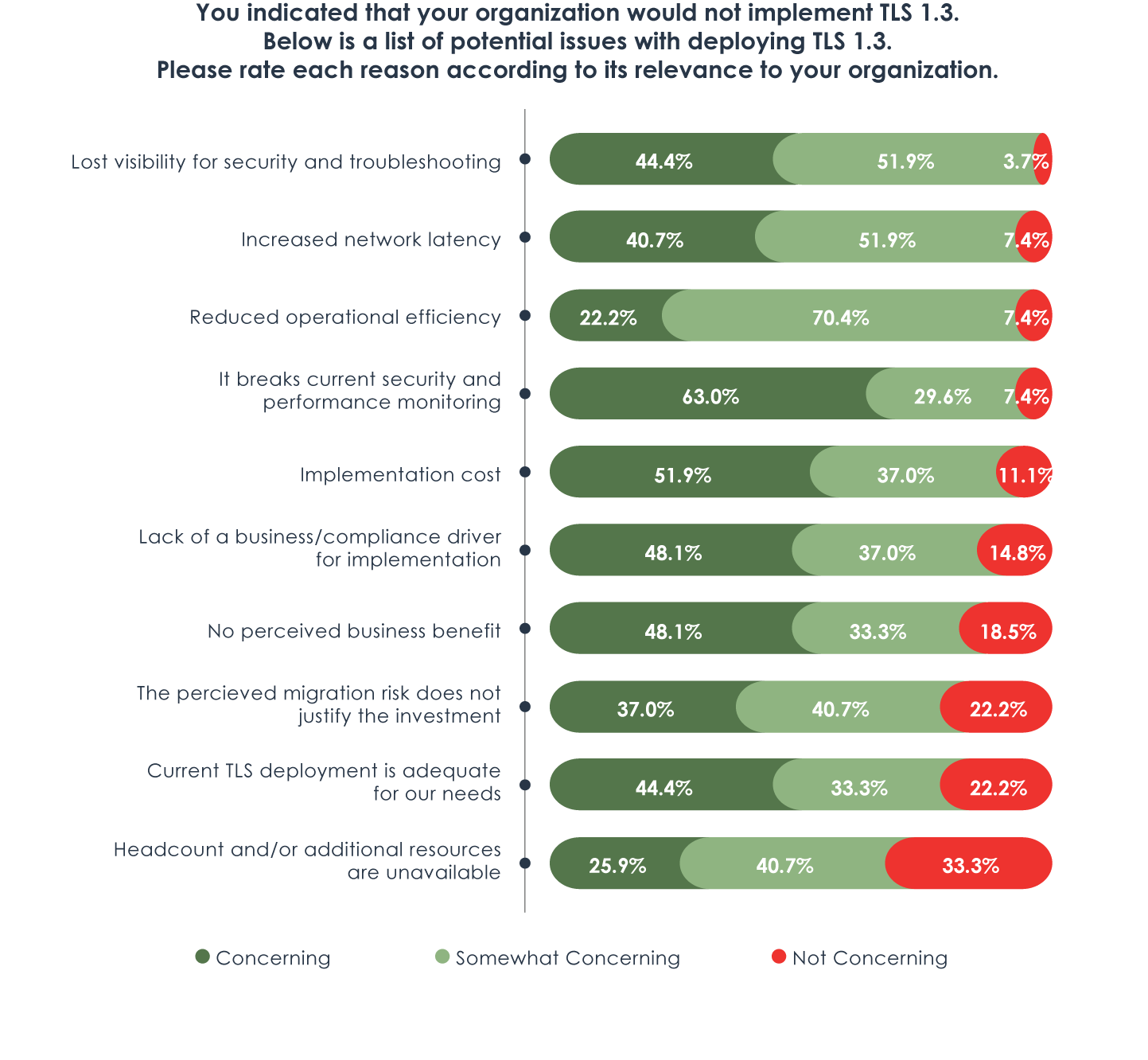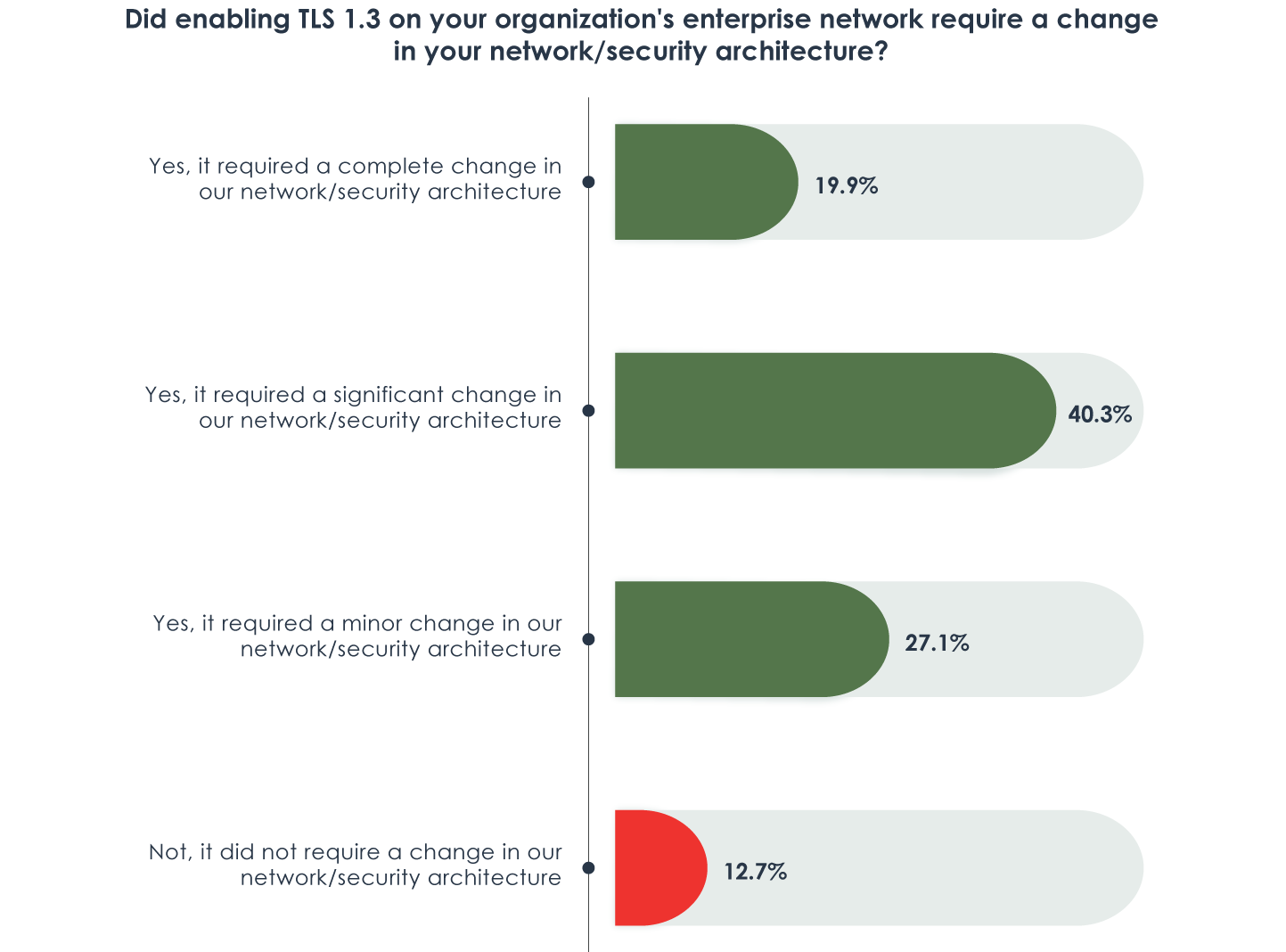Novo estudo revela o que está impulsionando e limitando a implementação do TLS 1.3
Quatro anos atrás, Meghan Markle se casou com o príncipe Harry. Enquanto isso, a Sears entrou com pedido de falência, e o mundo foi agraciado com uma rara superlua azul de sangue. A Toys “R” Us também fechou todas as suas lojas, e a Apple se tornou a primeira empresa americana de capital aberto a atingir US$ 1 trilhão em valor.
Não podemos esquecer que 2018 também marcou a aprovação do TLS 1.3 pela Internet Engineering Task Force (IETF).
Desde então, as organizações tiveram bastante tempo para avaliar os benefícios e desafios da adoção do TLS 1.3, a versão mais recente de um dos protocolos criptográficos mais amplamente utilizados, que permite a segurança e a privacidade de dados na Internet.
Para entender por que — ou por que não (ainda) — as empresas implementaram o TLS 1.3, a Enterprise Management Associates (EMA) preparou o relatório de pesquisa, “Quarto aniversário do TLS 1.3: O que aprendemos sobre implementação e monitoramento de rede?”
O estudo da EMA patrocinado pela F5 inclui opiniões de líderes de tecnologia e negócios na América do Norte em setores como serviços de tecnologia, finanças e saúde. Os participantes destacam como as empresas estão priorizando a segurança da informação e as prioridades de conformidade, sem mencionar como as regulamentações para segurança e privacidade de dados influenciaram a direção das prioridades de segurança.
Aqui estão três conclusões do relatório:
1. Controles regulatórios e de fornecedores, segurança de dados aprimorada e trabalho remoto impulsionam a adoção
Os padrões de privacidade e segurança de dados têm sido prioridade para líderes empresariais e de tecnologia nos últimos anos. Portanto, não é nenhuma surpresa que os participantes do estudo tenham indicado a segurança e a privacidade de dados aprimoradas como os principais motivadores para a implementação do TLS 1.3. De fato, 85% dos indivíduos pesquisados indicaram a segurança de dados como o maior benefício da implementação do TLS 1.3.
Além disso, à medida que as empresas se adaptaram à pandemia da COVID-19, o impulso em direção ao trabalho remoto e sua continuidade e a necessidade de lidar com segurança com dados confidenciais e propriedade intelectual da empresa desempenharam um papel na adoção do TLS 1.3. Como mostra a Figura 1, 76% dos entrevistados usam TLS 1.3 para tráfego comercial de funcionários remotos.
2. Considerações sobre visibilidade e monitoramento são os principais obstáculos
Apesar dos controles regulatórios e de fornecedores, como o HIPAA e o Regulamento Geral de Proteção de Dados (GDPR) da UE, as organizações estão lutando para avançar com o TLS 1.3 devido ao impacto previsto nos planos de segurança e monitoramento em seu ambiente, conforme demonstrado na Figura 2. Além disso, não é segredo que esse tipo de integração pode ser desafiador. Então, em vez de assumir o compromisso, muitas organizações estão ganhando tempo para mapear um plano de migração e avaliar soluções provisórias que sejam mais fáceis e menos invasivas de implementar do que o TLS 1.3.
A perda de visibilidade também causa hesitação em 96% dos participantes da pesquisa. Afinal, 44% dos entrevistados que implementaram o TLS 1.3 foram forçados a reverter a implementação devido à perda de visibilidade do tráfego, e mais de um quarto dos entrevistados acredita que pode ter sofrido uma violação de segurança devido à falta de visibilidade do tráfego com o protocolo.
3. Os custos de recursos e de implementação são substanciais
Oitenta e sete por cento das organizações pesquisadas que implementaram o TLS 1.3 exigiram algum nível de mudança de infraestrutura para acomodar a integração, conforme ilustrado na Figura 3. Atualizar uma topologia de rede certamente é uma tarefa difícil de engolir para muitos. É demorado e caro. É difícil justificar a captação de recursos para implementar um projeto dessa escala, dados os recursos humanos limitados de uma equipe de segurança já sobrecarregada e seu valor comercial percebido muito baixo em comparação às necessidades comerciais concorrentes (81%).
Embora diversas variáveis continuem a influenciar a adoção do TLS 1.3, uma coisa é certa: o TLS como um protocolo de privacidade de dados recomendado veio para ficar.
E com quase 90% de todo o tráfego da Internet agora criptografado, e esse número continuando a crescer, o que você não pode ver pode lhe prejudicar. Os cibercriminosos estão constantemente aproveitando o tráfego criptografado para ocultar cargas maliciosas, independentemente da versão do TLS. Se você não inspecionar, estará deixando sua organização vulnerável.
Saiba mais sobre o que os líderes de tecnologia e negócios dizem sobre a implementação do TLS 1.3 no relatório completo da EMA e entenda por que a visibilidade e a orquestração do tráfego criptografado SSL/TLS — especialmente o tráfego de entrada e saída criptografado com TLS 1.3 — são tão vitais hoje.



